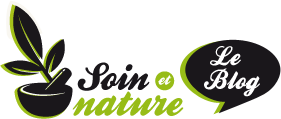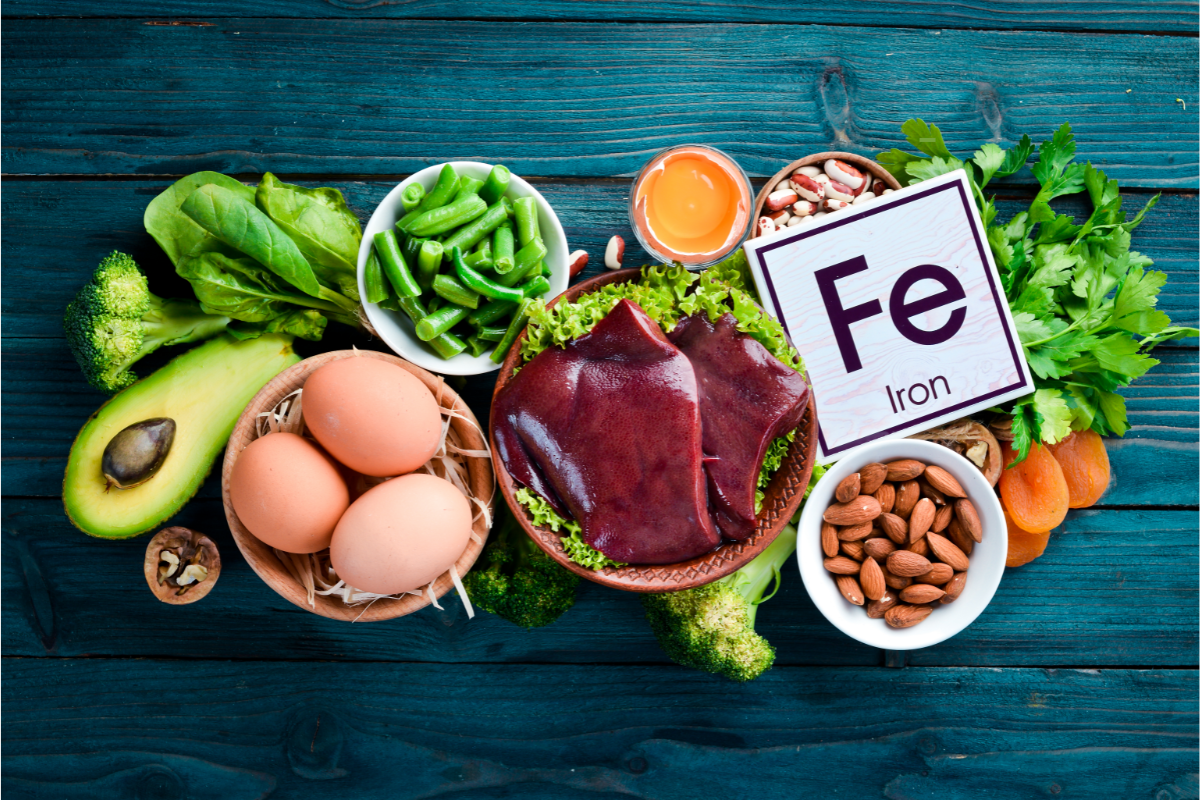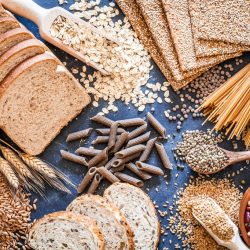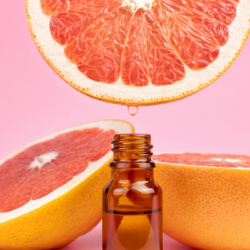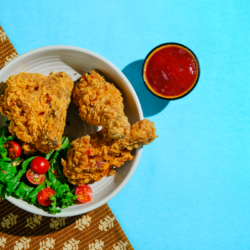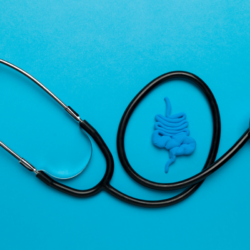Anemia is characterised by a drop in the number of red blood cells or their haemoglobin content. It reduces the blood’s ability to carry oxygen. This condition can lead to fatigue, shortness of breath and other symptoms that affect quality of life. Fortunately, there are effective treatments and preventive measures. Diet is one of the main approaches to anaemia.
Anti-anaemia” diet: the central role of nutrition in prevention
Nutrition plays a key role in preventing and managing anaemia. Much more than a source of energy, our diet becomes a tool for producing red blood cells in sufficient quantity and quality. An anti-anaemia diet provides the body with the nutrients it needs for erythropoiesis (i.e. the production of red blood cells) while promoting their absorption.
Among the essential nutrients, iron, folates, vitamin B12, vitamin C, proteins and other trace elements play an important role.
So it’s important not just to consume these nutrients. You also need to understand how to combine them , improve their absorption and avoid the dietary obstacles that slow down their assimilation. Let’s look at the basics of a strategic diet to combat anaemia.
Iron: an essential mineral to keep a close eye on
Iron is the key nutrient in the fight against anaemia. It is a direct component of haemoglobin, the molecule that carries oxygen in the blood. Iron deficiency remains the most common cause of anaemia. It mainly affects women of childbearing age, children, adolescents, the elderly and athletes.
The two forms of iron in food
There are two types of iron:
- Haem iron, found in foods of animal origin: red meat, liver, poultry and fish. It is well absorbed by the body (around 25 to 30%).
- Non-heme iron, of plant origin, found in legumes (lentils, chickpeas), green leafy vegetables (spinach, chard), wholegrain cereals, seeds and dried fruit. Its absorption rate is lower (2 to 10%), but certain dietary combinations can improve it.
Encourage absorption of non-haem iron
To increase the absorption of plant iron, we recommend combining it with a source of vitamin C. For example, lemon juice can be added to a lentil salad, or an orange, strawberry or kiwi can be added to a vegetable dish.
Avoiding obstacles to iron absorption
Certain foods reduce the absorption of iron. It is best to eat them at a distance from iron-rich meals:
- Tea and coffee contain tannins that slow down its absorption.
- Dairy products, which are rich in calcium, can also reduce absorption.
- Phytates (in certain wholegrain cereals) and oxalates (found in rhubarb and spinach) also interfere with iron absorption.
For people who are deficient or at risk, supplementation can be useful. However, it must be prescribed by a health professional. It is also essential to follow the instructions for taking it to maximise its effectiveness.
Vitamin B12 and folates: essential allies for red blood cells
An anti-anaemia diet does not rely solely on iron. Vitamin B12 (or cobalamin) and folates (or vitamin B9) are just as essential. Together, they are involved in the formation of red blood cells in the bone marrow. If there is a deficiency, the bone marrow produces red blood cells that are too large and ineffective. This is known as megaloblastic anaemia.
Where can I find vitamin B12 in food?
Vitamin B12 is found almost exclusively in foods of animal origin: liver, meat, fish, seafood, eggs and dairy products. Vegans (and some strict vegetarians) are therefore at risk of a deficiency. In this case, supplementation is often essential, in the form of tablets or injections.
Folates: sources and good cooking practices
Folates are widely available in dark green leafy vegetables (such as spinach, chard or watercress), legumes (lentils, split peas, black beans), citrus fruit, avocados and whole grains.
Beware of cooking: it destroys a large proportion of the folates. It is therefore advisable to cook foods gently or eat them raw whenever possible.
Combined deficiencies: what are the health risks?
During pregnancy, folate requirements increase sharply. Supplementation is often necessary to avoid anaemia and prevent certain neural tube defects in the foetus.
A combined folate and vitamin B12 deficiency can lead to serious neurological disorders, in addition to anaemia. It is therefore crucial to monitor intakes, particularly in the case of special diets or digestive disorders such as coeliac or Crohn’s disease, which limit intestinal absorption.
Vitamin C: a natural booster of iron absorption
Vitamin C is not directly involved in the production of red blood cells. Yet it plays a central role in the anti-anaemia diet. It facilitates the absorption of non-haem iron, the kind found in plants.
Why is vitamin C useful against anaemia?
Vitamin C converts non-haem iron into a chemical form that is more easily absorbed by the intestine. It is therefore particularly useful for people who eat little or no meat, or who have increased iron requirements.
Simple tips for getting more vitamin C
Here are a few easy-to-follow ideas:
- Add fresh lemon juice to your vegetables or pulses.
- Serve your vegetarian dishes with raw vegetables rich in vitamin C: red pepper, raw cabbage, black radish.
- Finish your meals with a piece of fresh fruit: orange, kiwi, mango, strawberry or guava.
Eat your food fresh and raw as much as possible
Vitamin C is fragile. It is easily destroyed by heat and light. Prolonged cooking or storing for too long greatly reduces its content in food.
What’s more, it’s a real health bonus thanks to its antioxidant action. Vitamin C also acts as an antioxidant. It protects cells against damage linked to oxidative stress, a factor that can aggravate certain forms of anaemia.
Proteins: blood cell builders
We rarely think of proteins when we talk about preventing anaemia. Yet they are essential. They provide the amino acids needed to make blood cells. They also play a role in haemoglobin synthesis and iron metabolism.
Why are proteins important?
Even with adequate intakes of iron, vitamin B12 and folate, a protein deficiency can disrupt the production of red blood cells. This is particularly true of growing children, the elderly and those following a vegetarian or vegan diet.
What are the right sources of protein?
- Animal proteins: meat, eggs, fish, milk, yoghurt, cheese.
- Plant proteins: pulses (chickpeas, lentils, beans), tofu, tempeh, quinoa, seeds (hemp, chia, flax), dried fruit.
How can vegetarians optimise their intake?
To guarantee a complete intake of essential amino acids, vegetarians can combine several plant sources in the same meal. For example: rice, lentils or maize, red beans.
Including these foods regularly in your diet not only helps to prevent anaemia, but also boosts immunity, vitality and muscle mass.
Iron supplementation: indications and precautions
Iron supplementation remains one of the most widely used treatments for iron deficiency anaemia. This form of anaemia is common in women of childbearing age, pregnant women, growing children, the elderly and those suffering from chronic blood loss.
When should iron supplementation be considered?
Before starting any treatment, a medical diagnosis is essential. This is based on a blood test: haemoglobin level, ferritin (iron reserves), transferrin and iron saturation. Without a confirmed deficiency, supplementation may be useless or even harmful.
Too much iron can lead to oxidative stress, liver damage or encourage certain bacterial infections. Hence the importance of strict medical supervision.
What form of iron should I choose and how should I take it?
Iron supplements come in various forms: ferrous sulphate, ferrous gluconate, ferrous fumarate or liposomal iron, which is often better tolerated. They come in the form of tablets, drinkable ampoules or, in some cases, intravenous injections.
Iron should preferably be taken on an empty stomach, 30 to 60 minutes before meals, for optimum absorption. However, this can cause side effects: nausea, abdominal pain, constipation or diarrhoea. In this case, your doctor may advise you to take your iron with your meals, or to split your doses.
Drug interactions and duration of treatment
Some drugs reduce the absorption of iron: antacids, proton pump inhibitors, antibiotics (tetracyclines), biphosphonates. It is therefore recommended that you take them at least 2 to 3 hours after taking iron.
Treatment should not be interrupted as soon as symptoms disappear. Even if haemoglobin levels rise again within a few weeks, supplementation should be continued for 3 to 6 months to replenish reserves. Otherwise, the risk of relapse is high.
Other ways of preventing and managing anaemia
Preventing and managing anaemia does not depend solely on diet. Other factors can influence the onset or correction of anaemia. Here are a few additional approaches that should not be overlooked.
Anaemia linked to certain medications
Certain treatments can cause anaemia, in particular haemolytic anaemia. This is the result of an immune reaction that destroys red blood cells. Medications often involved include certain antibiotics, non-steroidal anti-inflammatory drugs and cancer treatments.
It is essential to inform your doctor of all the medicines you are taking in order to monitor these side effects.
Managing heavy periods
Women with heavy periods are at high risk of iron deficiency anaemia. In some cases, hormonal treatments such as the contraceptive pill can help reduce menstrual flow and prevent iron loss.
Anemia in athletes
Sportspeople, especially women, are sometimes exposed to increased iron loss as a result of intense physical effort. An iron-rich diet, regular medical check-ups and possible supplementation can help maintain adequate iron levels.
Hydration also plays an important role. It helps maintain good blood volume and facilitates oxygen transport. Moderate physical exercise, such as brisk walking, improves circulation and endurance. However, in the case of severe anaemia, it is essential to consult a professional before starting an exercise programme.
Conclusion
The prevention and treatment of anaemia are based on a holistic approach that includes a balanced diet, management of individual risk factors and appropriate medical supervision. By adopting proactive measures and remaining attentive to your body’s signals, anaemia can be effectively prevented and good health maintained.
Source:
-
- https://www.nhsinform.scot/illnesses-and-conditions/nutritional/vitamin-b12-or-folate-deficiency-anaemia/
- https://www.who.int/news-room/fact-sheets/detail/anaemia
- https://www.palmettokidney.com/lifestyle-changes-to-manage-anemia
- https://www2.gov.bc.ca/gov/content/health/practitioner-professional-resources/bc-guidelines/iron-deficiency
